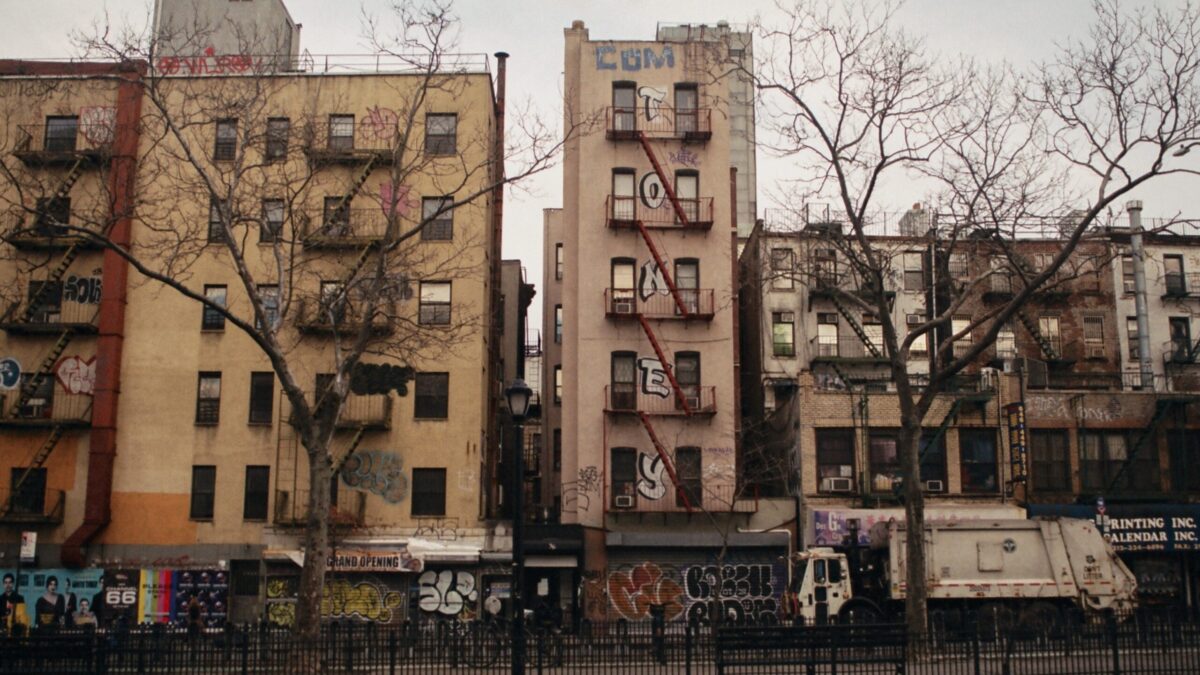
3 Investing Principles We’ve Stuck to at JP Acquisitions
January 8, 2024
The Essential Team Members for a Vertically Integrated Multifamily Syndication Firm
January 29, 2024I recently toured a D-class property in Chicago’s North Austin neighborhood to get a first-hand experience of what these types of properties are like. For the most part, I knew what I was getting into, but after touring the property I thought it’d be interesting to convey my experience to other investors so they could get further insights into this property class. In this post I want to dive into what I learned from the property owner regarding the area and the tenants as well as the financials and condition of the property.
For context, D-class property types are the lowest on the class scale and are usually built more than 40 years ago. These types of multifamily properties house lower-income and/or section 8 government-subsidized tenants and are located in lower socioeconomic areas. These properties have the highest cap rate which means they’re relatively cheap compared to the other property types and there are several characteristics that make them priced so. Class D properties tend to experience higher vacancies, substantial deferred maintenance, and are located in high-crime areas. As a result of the factors listed, they require intense management and heavy security. Normally, investors shy away from these properties, however, more experienced investors who have a certain temperament will invest in these deals due to the possibility of achieving high returns. With this being said, let’s jump into the post.
Financials and Condition of the Deal
This deal was actually two separate properties located about a one-minute walk from one another and was not managed by a professional property management company. In total there were 19 units which were nearly all one bedroom one bath and 650 square feet. The cap rate was roughly 7.2% and the expenses were high at about 60% of the effective gross income. At the time of touring, there were four tenants being evicted due to refusing to pay after the eviction moratorium was lifted in Chicago which represented an occupancy of 79%. In terms of the mechanicals of the property, the electrical systems of both properties were brand new, one of the boilers was recently replaced while the other was an original boiler from when the property was built over 50 years ago. Furthermore, in both properties the plumbing was mostly made out of copper and the heat was provided via furnaces that were “old” according to the property owner. The roofs and gutters of one of the properties were recently replaced while the other property was said to have a roof that was in “good condition.” Regarding utilities, the tenants paid for gas and electricity and everything else (water, sewer, and trash) was covered by the landlord.
As soon as I stepped into the property I noticed someone had written “F*** 12” on the wall which if you’re not familiar essentially means ‘screw the police’. That alone said a lot about not only the tenant base but the area. As I walked up the stairs I could see the dirt that had built up over the years in every corner and crack and it was apparent that the common spaces of this property had not seen a good cleaning in years. The ceiling and walls were blackened and from what I don’t want to know. As we walked up to one of the vacant units which was being renovated as a result of a small fire, I could feel that this was not a place I wanted to be. I stepped into the living room which, similar to the rest of the building, needed to be renovated in every possible way. The floorboards squeaked, the windows looked like they were going to fall apart at any moment, and if I had touched the walls I’m sure black residue would’ve stained my fingers similar to that of a mechanics after a day of hard work. The fire had happened in the kitchen and in the ceiling there was a huge hole revealing the interior of what separated the vacant unit I was in with that of the one above it. Surprisingly enough, the cabinetry had yet to be replaced but was in somewhat fair condition and while the bathroom had seen better days, it wasn’t as bad as I had expected. Nevertheless, we weren’t in that unit for very long before making our way around the back to enter the basement to check out the electrical system, boiler, security system, and furnace. We entered the basement, which gave me the feeling like I was in a dungeon, and I must say that the electrical system individually metered for each unit was in great condition almost as if it had been replaced a couple months ago. The boiler was new as I had stated earlier and while I don’t exactly know how old the furnace was, it appeared to be original. I took a few pictures of what was noteworthy in the basement before heading out to the next property. I should note that while what I write here is accurate as far as I can remember, to a small degree it’s likely exaggerated.
In some measure, I was happy to see that the second property was in better condition and lacked the beautiful artwork on the wall at the entrance of the first property (obviously I’m being sarcastic). This building was cleaner but by no means acceptable to the types of apartment communities that my team and I plan on acquiring in the future. We soon stepped into one of the units which was filled with black garbage bags holding the belongings of one of the tenants being evicted. This unit was recently occupied and thus it was relatively clean and was very similar in terms of size and layout of the unit in the other building. Since there wasn’t all that much to see, we made our way out of the unit and around the back of the property to check out the electrical system, boiler, security system, and furnace in the basement. This property had the “older” boiler and the furnace, electrical system, and security system were all in similar condition to that of the first property. Once again, we weren’t in there for very long before making our way back to the first property. As the broker and I chatted while walking, he made a comment that someone was “burning up” and we laughed as that was expected given the area we were in and ‘it’ is legal in Illinois. We stood where the broker, property owner, another potential buyer, and I met up chatting for a few minutes before we all went our separate ways to get on with our day.
What I learned from the property owner
While on the tour I made sure to ask several questions to the property owner to get a better understanding of the properties. As a side note, I have a lot of respect for the woman who has owned the property for a few years and managed to handle the issues relating to crime I’m about to note. Firstly, I asked her if she had any section 8 tenants to which she responded that she used to have three in the past, but those individuals either moved out or improved their situation enough to get out of the program. I went on to ask her about the crime in the area and she noted a couple of things. She mentioned that there was a “huge” gang problem in the area and that the police were understaffed which made it difficult for them to handle the activity that was going on. While she never stated as to if her tenants were involved in any gang activity, I would assume the answer to that is “yes” given what was written on the wall of the first property. As to how she handled the gang situation, she made close ties with the local police precinct and by allowing them access to her security system via a key she gave them to access the basement, the police worked with her to beef up security and move the gang activity “a few blocks over.” Furthermore, she said that she had a problem with squatters for a brief period of time. To provide some background, a squatter is a person who occupies an abandoned or unoccupied area of land or a building who does not own, rent, or have permission to use the premises. She solved the squatter problem similarly to how she solved the gang problem which was by working with the police to ‘evict’ those individuals and remove their belongings. She went on to note that squatters have not been a problem for quite some time. Regarding property management, she said that she had a property manager (PM) for a year but he made her life worse. That individual hadn’t paid attention to the property to the degree that he should have considering the crime in the area. He wouldn’t even post eviction notices for tenants that weren’t paying which led to the property owner having to do his job for him. She ended up firing the property manager and having to do the job herself.
Adding on to the story in the previous section, before the tour I asked the broker why was it that the seller wanted to dispose of the asset. I was given the all too common response that the seller simply wanted to “move on” and sell her assets. While the answer I received from the broker wasn’t necessarily wrong, it seems obvious that the crime in the area which resulted in the issues I wrote about added much unnecessary stress to the owner’s life. I suppose that stress led her to realize that whatever income she was generating from the property wasn’t worth the headaches. The fact of the matter is that the issues related to D-class properties are not uncommon and it takes a certain individual or team to operate them.
Conclusion
At this point in reading this post, you might be asking yourself why was it that I toured the property in the first place? The answer to that is that I had a game plan, which I admit I knew was a long shot, of repositioning the tenant base to Section 8 tenants and creating synergies in terms of property management given that our property is not that far from this property but in a much better area. In addition, I was looking to build a relationship with this broker during this time given that transaction volume is low. However, as soon as I got done touring the property I knew that there was no way my team and I would be moving forward with this deal.
There are other stories out there of properties with similar or worse issues and the point of this post was to highlight what an investor is getting into when they invest in a D-class property. Given the crime in lower socioeconomic areas, it’s no wonder why multifamily operators tell investors to steer clear of purchasing D-class assets.
If you have any questions regarding the terms and concepts in this post or previous ones, don’t hesitate to reach out to either me (tedi.nati@jpacq.com) or someone on our team so we can help explain what is causing the confusion. If you’re interested in investing with us at JP Acquisitions, you can contact us via email (contact@jpacq.com), LinkedIn, Instagram, or our investor portal to set up a meeting.
As always, I hope you enjoyed reading this post as much as I have writing it. Best of luck!




